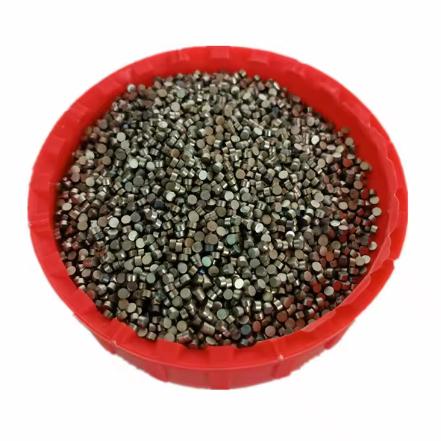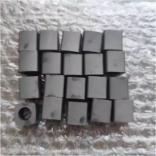**Title: Spark It Up! Giving Metal Plates a Jolt of Charge**
(How To Charge A Metal Plate)
Ever touched a doorknob on a dry day and gotten a tiny shock? That’s static electricity. Now, imagine controlling that zap, focusing it deliberately onto a smooth, cool piece of metal. Charging a metal plate isn’t magic. It’s fascinating science with real-world muscle. Forget boring instructions. Let’s explore the electrifying world of juicing up metal surfaces.
**1. What is Metal Plate Charging?**
Think about rubbing a balloon on your hair. The balloon steals electrons from your hair, becoming negatively charged. Your hair loses electrons, becoming positively charged. Charging a metal plate works on similar principles. It means deliberately adding or removing electrons from the metal’s surface. This creates an imbalance. The plate isn’t neutral anymore. It has an electric charge. This charge can be positive (missing electrons) or negative (extra electrons). The plate itself acts like a simple capacitor. It holds this electrical potential energy on its surface. This charged state is the key to making the plate *do* things. It’s the foundation for everything that follows.
**2. Why Charge a Metal Plate?**
Why bother giving a metal plate this electrical imbalance? Because a charged plate becomes a powerful tool. It interacts strongly with other electrical charges and fields. One major reason is electrostatic attraction or repulsion. A charged plate can pull in or push away other charged objects. This is incredibly useful. Picture a factory spray-painting car parts. Charging the paint droplets and the metal part creates a strong attraction. The paint sticks evenly, reducing waste. Charged plates are essential in photocopiers and laser printers. They help precisely move toner particles onto paper. Scientists use charged plates in particle accelerators to steer beams. Artists even use the principle for unique painting techniques. The ability to control attraction and repulsion at a distance makes charged plates invaluable.
**3. How to Charge a Metal Plate (Simple Ways)**
So, how do you actually get that charge onto the plate? Forget complex machines for now. Two basic methods work well:
* **Rubbing (Contact Charging / Triboelectric Effect):** This is like the balloon trick. Rub the metal plate vigorously with a suitable material. Wool, fur, or silk often work. Rubbing causes electrons to transfer between the materials. One gains electrons (becomes negative). The other loses electrons (becomes positive). If the plate gains electrons, it charges negatively. If it loses them, it charges positively. The charge level depends on the materials and rubbing force. This method is simple but gives a relatively small charge. It’s also temporary. The charge leaks away quickly.
* **Using Another Charged Object (Induction):** This method doesn’t touch the plate directly with the charge source. You need a pre-charged object, like a plastic rod rubbed with fur (negatively charged). Hold this charged rod *near* the metal plate, but don’t touch it. The rod’s negative charge repels free electrons *inside* the metal plate. These electrons move to the far side of the plate. The side near the rod now has a positive charge (missing electrons). Now, while keeping the rod close, briefly touch the *far* side of the plate with your finger. This grounds the plate. The repelled electrons flow out through your finger into the ground. Remove your finger first. Then pull the charged rod away. The plate is now left with a net positive charge! This method gives a stronger, more predictable charge than rubbing alone.
**4. Where Charged Metal Plates Shine (Applications)**
Charged metal plates aren’t just lab curiosities. They power practical technology everywhere:
* **Spray Painting & Powder Coating:** This is the big one. The object to be coated (like a car panel) is charged. The paint or powder particles are given the *opposite* charge. Strong attraction pulls the coating onto every nook and cranny. This creates a smooth, even, durable finish with minimal overspray waste. It’s efficient and high-quality.
* **Air Purifiers (Electrostatic Precipitators):** Dirty air flows between charged metal plates. The plates charge dust, smoke, and pollen particles. The charged particles are then powerfully attracted to oppositely charged collector plates. They stick there. Clean air flows out. This effectively removes pollutants.
* **Printing & Photocopying:** Charged plates (often drums or belts) are crucial. They attract and transfer tiny, charged toner particles precisely onto paper in the pattern needed for text or images. This is the core of laser printing and photocopying technology.
* **Scientific Instruments:** Charged metal plates create and shape electric fields. These fields control beams of charged particles in devices like mass spectrometers (which identify chemicals) and particle accelerators (like the Large Hadron Collider). Precision is key here.
* **Static Elimination:** Sometimes you *don’t* want charge. Special ionizing bars use charged plates or points to generate streams of positive and negative ions. These ions neutralize unwanted static charges on materials like plastic sheets or fabrics during manufacturing.
**5. Charging Metal Plates: Your Questions Answered (FAQs)**
**Q1: Does the plate need special metal?**
No. Most common metals like aluminum, steel, copper, or brass work fine. They conduct electricity well, allowing electrons to move freely across the surface. This is essential for charging the whole plate evenly.
**Q2: Is charging a metal plate dangerous?**
Usually, the small charges from rubbing or basic induction aren’t dangerous. They feel like static shocks. However, large industrial systems use very high voltages. These can deliver severe or even lethal shocks. Always respect safety protocols around high-voltage equipment. Never experiment with mains electricity.
**Q3: How long does the charge last?**
Not long on its own. Air isn’t a perfect insulator. Humidity and dust help the charge slowly leak away. Touching the plate grounds it instantly, neutralizing the charge. Insulating the plate (like mounting it on a plastic stand) helps it hold the charge a bit longer.
**Q4: Can I charge a plate without touching it or rubbing it?**
Yes! Induction (Method 2 above) does exactly this. You influence the charge *inside* the plate using a nearby charged object, then ground part of it to lock the charge in place. No direct contact with the charge source is needed.
**Q5: Why does humidity affect charging?**
(How To Charge A Metal Plate)
Water molecules in humid air help conduct electricity. They provide paths for the charge on the plate to leak away into the air or surrounding objects. This happens much faster than in dry air. Dry conditions are best for building and holding a static charge.
Inquiry us
if you want to want to know more, please feel free to contact us. (nanotrun@yahoo.com)


